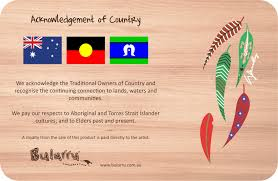This week we are
looking at the town of Melbourne. Greater Melbourne's area of
approximately 9900 km² of suburbs spread more than 40 km to the south, 30 km to
the east, 20 km to the north and sprawl across vast, flat basalt plains to the
west.
Melbourne is the
coastal capital of the southeastern Australian state of Victoria. At the city's
centre is the modern Federation Square development, with plazas, bars, and
restaurants by the Yarra River. In the Southbank area, the Melbourne Arts
Precinct is the site of Arts Centre Melbourne – a performing arts complex – and
the National Gallery of Victoria, with Australian and indigenous art.
Melbourne's
population is estimated to be around 5.39 million people.
Melbourne is
situated on the traditional lands of the Wurundjeri Woi-wurrung and
Bunurong Boon Wurrung peoples, part of the Eastern Kulin Nation. These
First Nations peoples have a strong connection to the land, water, and
community, and their history and culture are integral to Melbourne's identity.
Melbourne has always
been an important meeting place for events of social, educational, sporting,
and cultural significance for the Wurundjeri Woi-wurrung and their Eastern
Kulin neighbours.
The Wurundjeri and
Bunurong peoples continue to have a strong connection to their land, water, and
community, and they are actively involved in cultural preservation and
community engagement.
Melbourne offers
opportunities for visitors to learn about and experience Aboriginal culture
through organizations like the Koorie Heritage Trust, Museums Victoria
(Bunjilaka), and other cultural initiatives.
Melbourne has
a temperate oceanic climate, also known as a mild temperate
climate. This means it experiences warm summers, cool winters, and
relatively consistent rainfall throughout the year. It's also known for
its unpredictable weather, with locals often saying they can experience four
seasons in a single day.
The town’s location
on the coast and its proximity to the Southern Ocean contribute to its
changeable weather. It's also located on the boundary of hot inland areas
and the cool Southern Ocean, which further contributes to its unpredictable
conditions.
Melbourne is widely
known for its vibrant street art, bustling laneways, world-class coffee
culture, diverse culinary scene, and thriving arts and culture scene. It's
also renowned as a major sporting city, hosting major events like the
Australian Open and Australian Grand Prix. Additionally, Melbourne is
recognized for its liveability and multiculturalism, making it a popular
destination for both residents and visitors.
Melbourne's
history begins with its founding in 1835 by settlers from Tasmania who
established a settlement on the Yarra River. The city was named in honour
of the British Prime Minister, William Lamb, 2nd Viscount
Melbourne. Melbourne experienced significant growth due to the 1850s Gold
Rush, which brought in a large influx of people and fuelled economic
prosperity.
In the 1850’s the discovery of gold in the region led to the Gold Rush, dramatically transforming Melbourne into a bustling metropolis. The city's population quadrupled, reaching 80,000 within three years.
In 1851 Victoria separated from New South Wales and became a separate colony, with Melbourne as its capital.
Between 1850 and 1880
Melbourne became a major trading and industrial centre, with the development of
infrastructure like railways and the Melbourne Harbour Trust. During 1901
and 1927 Melbourne served as the seat of government for the Commonwealth of
Australia.
Melbourne hosted the
Summer Olympics in 1956, becoming the first city outside of Europe and North
America to do so.
During the 1990’s
and 2000’s Melbourne continued to evolve, with the development of major
infrastructure projects like CityLink and the construction of Federation
Square.
Melbourne is also famous for The Melbourne Cup which is a horse race held on the first Tuesday in November. It is an annual race held at the Flemington Racecourse. It is the richest two-mile handicup in the world and one of the richest turf races. The event starts at 3:00 pm on the first Tuesday of November and is known locally as "the race that stops the nation".
The Melbourne Cup
has cemented itself as a part of Melbourne and Australian culture, having
been run every year since 1861 except for an intermission during both World
Wars.
The day of the race
has been a public holiday for much of Victoria since 1876.











Melbourne really did host the Summer Olympics in 1956, becoming the first Southern Hemisphere city to do so. It was the highlight of my dad's career - he was the filtration engineer for swimming, diving and water polo, and got free tickets for all the family for the water sports. I loved it!
ReplyDeleteBefore my time the 1956 Olympics but I think it is cool your dad got free tickets to see those events they diving I find amazing
DeleteGold certainly seems to be the catalyst that populated most every continent in the 1800's.
ReplyDeleteYeah it was in so many places
DeleteSuch a vibrant and historic city, Jo-Anne. Thanks for sharing so much info here. Blessings!
ReplyDeleteYou're welcome, thanks for reading the post
DeleteFunny I read about the Melbourne Cup the same day of our Kentucky Derby...
ReplyDelete